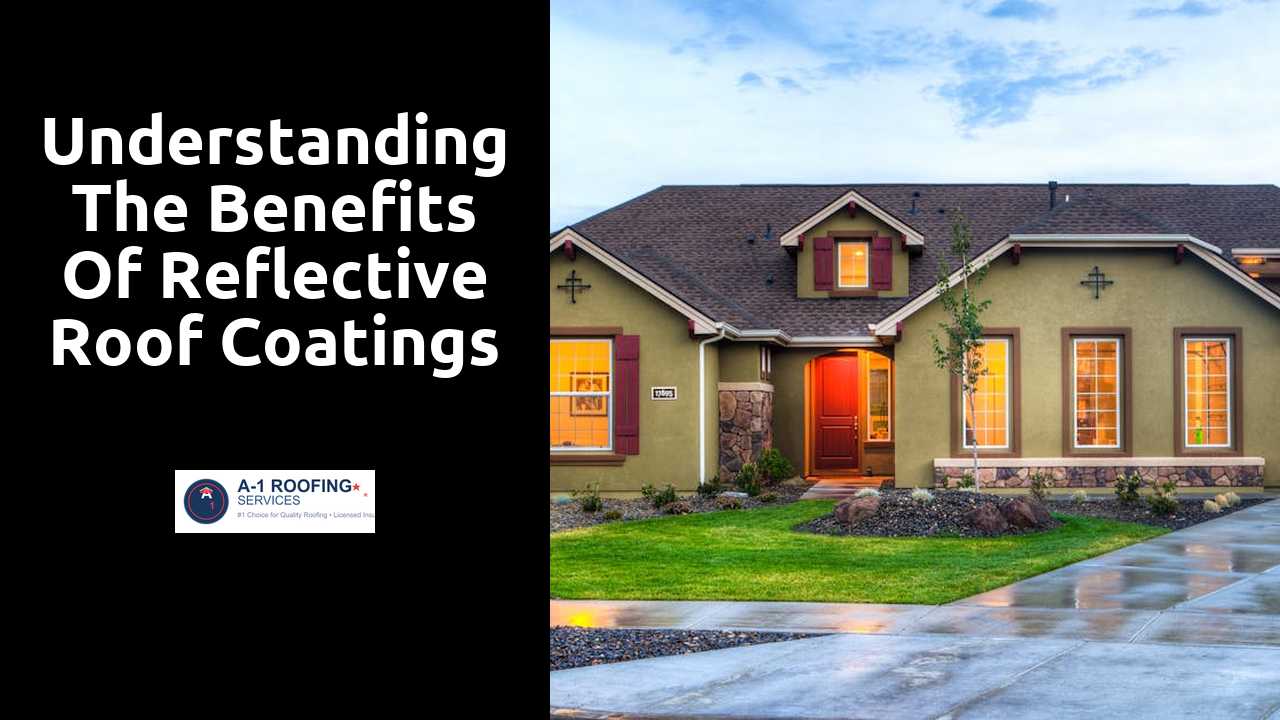
Understanding the Benefits of Reflective Roof Coatings
Table Of Contents
Cost Considerations
The initial investment in reflective roof coatings can vary widely depending on factors such as material choice, roof size, and application complexity. While the upfront costs might seem significant, it's essential to consider the long-term savings on energy bills and potential maintenance. Many property owners find that these coatings compensate for their installation expenses over time through reduced heating and cooling costs.
In addition to energy savings, tax incentives or rebates may be available for those who opt for energy-efficient building upgrades. These financial incentives can effectively lower the net cost of installation. Evaluating local policies and availability of such benefits is crucial for homeowners and businesses considering reflective roof coatings as a sustainable investment option.
Their blog is a great resource for information.
Analyzing the Return on Investment
Investing in reflective roof coatings can lead to significant financial benefits over time. One of the most compelling aspects is the reduction in energy costs. By reflecting sunlight and minimizing heat absorption, these coatings can lower cooling expenses during hot months. Many property owners report up to a 30% decrease in their energy bills after applying a reflective coating, leading to substantial savings over the lifespan of the roof.
Additionally, the longevity of reflective roof coatings contributes to their overall value. Many coatings come with warranties extending up to 15 years or more. This durability can delay the need for costly roof repairs or replacements. Property owners may also benefit from enhanced property value, as energy-efficient upgrades often make buildings more attractive to potential buyers or tenants. Investing in a reflective roof coating can thus yield a solid return in both reduced operational costs and increased property appeal.
Types of Reflective Roof Coatings
Reflective roof coatings come in several varieties, each offering distinct benefits and characteristics. Elastomeric coatings are among the most popular options due to their flexibility, durability, and ability to expand and contract with temperature changes. These coatings adhere well to various roof types, making them suitable for both commercial and residential applications.
Another type includes reflective acrylic coatings, known for their ease of application and quick drying time. They provide a glossy finish that not only reflects sunlight but also enhances the aesthetic appeal of the building. Silicone-based coatings are also gaining traction, particularly for their water resistance and longevity. Each of these materials has unique properties that can cater to specific roofing needs and climatic conditions.
Comparing Different Coating Materials
When evaluating protective options for reflective roof coatings, several materials stand out. Acrylic coatings are popular due to their durability and ease of application. They provide excellent flexibility and resistance to sunlight, making them suitable for various climates. Silicone coatings also gain traction, particularly for roofs prone to ponding water. Their waterproof nature offers a level of protection that acrylics may not match, although they can come at a higher price point.
Another material worth considering is urethane, known for its toughness and UV resistance. Urethane coatings provide strong adhesion and can withstand physical stress better than some other options. However, installation may require more expertise, impacting labor costs. Lastly, elastomeric coatings offer an excellent balance of flexibility and insulation, making them a versatile choice for many applications. Each material presents unique advantages and disadvantages, necessitating careful consideration based on specific roofing needs and environmental factors.
Maintenance Requirements
Regular maintenance is essential to ensure the longevity and effectiveness of reflective roof coatings. Routine inspections can help identify any signs of wear, such as cracks or peeling, which, if left unaddressed, may compromise the coating's performance. It is advisable to clean the surface periodically to remove dirt and debris that can accumulate and diminish the reflective properties. Using a gentle detergent and a soft brush typically suffices for this purpose, ensuring that the roof remains free of contaminants.
Scheduled maintenance checks are crucial, especially after severe weather events. Such inspections can help assess any potential damage caused by high winds, heavy precipitation, or hail. If repairs are necessary, acting quickly can prevent more extensive damage and higher costs over time. Maintaining a detailed log of any maintenance activities also aids in tracking the condition of the coating and planning future upkeep.
Keeping Your Reflective Coating in Top Condition
Regular maintenance is essential for maximizing the effectiveness and longevity of reflective roof coatings. Inspecting the coating periodically for signs of wear, such as cracks or discoloration, allows for timely repairs. Cleaning the surface to remove dirt, debris, and algae buildup enhances the reflective properties. A gentle wash using non-abrasive cleaners ensures the integrity of the coating remains intact while promoting optimal performance.
Vigilance against potential damage from environmental factors also plays a crucial role in maintaining the coating's efficacy. Checking for leaks or punctures can prevent further water intrusion, which may compromise the coating's effectiveness. Reapplication may be necessary every few years, depending on the material and local climate conditions. Keeping detailed records of maintenance activities helps track the condition of the coating, ensuring informed decisions for future upkeep.
Related Links
Eco-Friendly Roofing Options for Sustainable LivingStrategies for Maximizing Home Energy Savings with Roofing